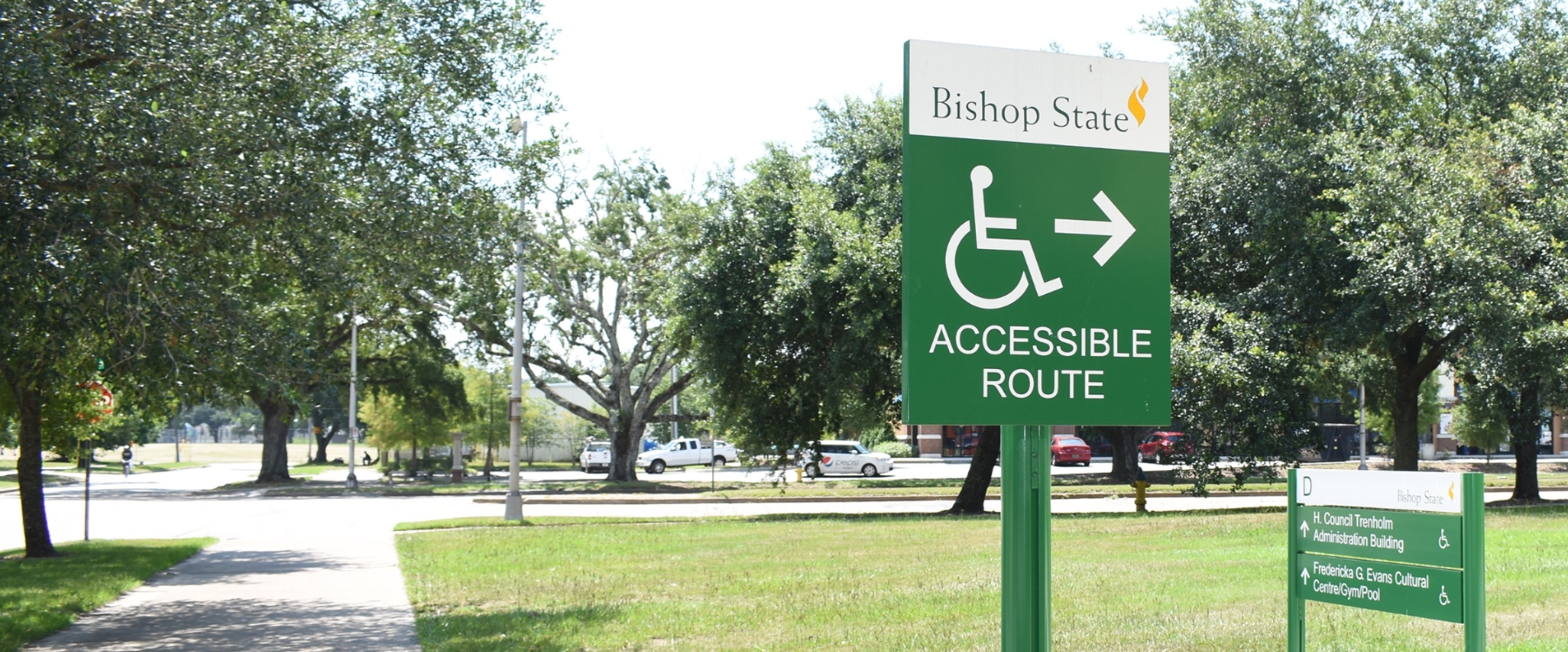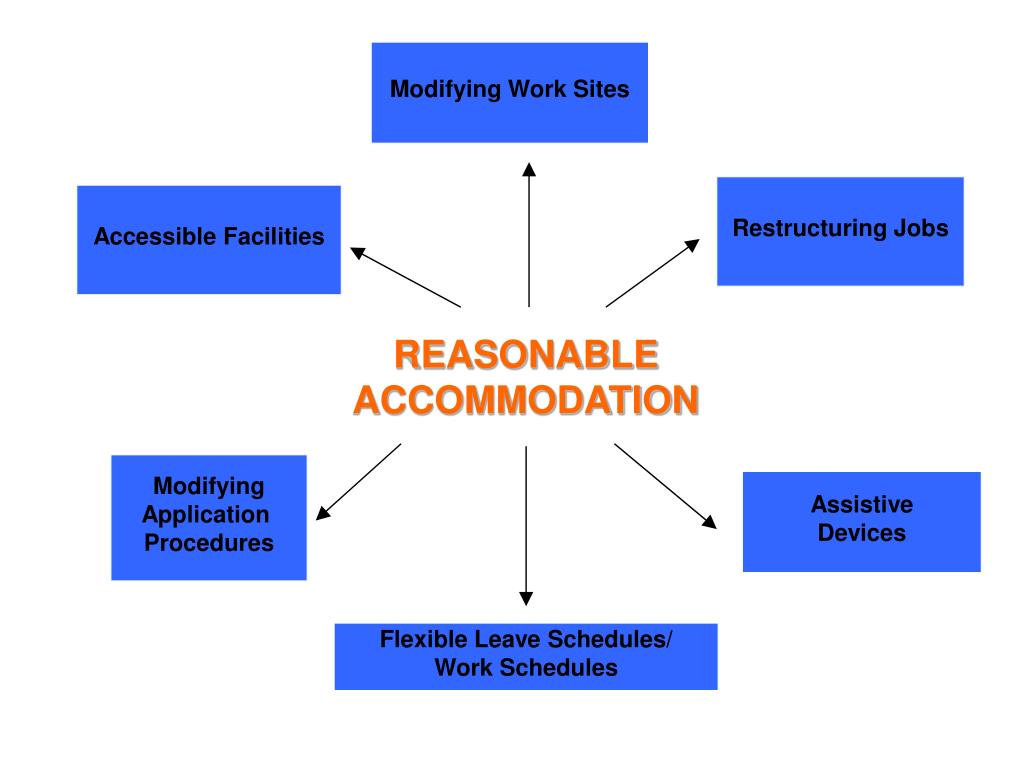

- ADA ACCOMMODATIONS PDF
- ADA ACCOMMODATIONS MANUAL
- ADA ACCOMMODATIONS FULL
Alarm systems that can be both seen and heard and.Perceptible information: The design communicates necessary information effectively to the user, regardless of the current light, visual, or sound conditions or the person’s abilities to read, see, or hear.
ADA ACCOMMODATIONS MANUAL
Including an instruction manual with clear drawings and no text.Simple and intuitive use: Use of the design is easy to understand, regardless of the user’s experience, knowledge, language skills, or current concentration level.A palm rest to aid those with arm mobility or strength limitations.A tapered card opening for ease in inserting or removing a bank card and.An automated teller machine (ATM) that has enhancements in the way it looks, feels, or sounds so that people with vision or hearing impairments can use it.Flexibility in use: The design accommodates a wide range of individual preferences and abilities.Power doors with sensors at entrances that are convenient for all users.Equitable use: The design is useful and marketable to people with diverse abilities.
ADA ACCOMMODATIONS PDF
Visit the Affordable Care Act for Americans with Disabilities pdf icon external icon to learn more.
Designates disability status as a demographic category and mandates data collection to assess health disparities. Mandates accessible preventive screening equipment and. Provides access to high-quality and affordable health care for many people with disabilities. Improves the Medicaid home- and community-based services option. Provides new health care options for long-term support and services. 
 Provides more health care choices and enhanced protection for Americans with disabilities. On March 23, 2010, President Obama signed into law the Patient Protection and Affordable Care Act, external icon commonly referred as ACA. People with Disabilities and the Patient Protection and Affordable Care Act Telecommunications such as telephones, televisions, and computers. Public accommodations such as restaurants, hotels, theaters, doctors’ offices, pharmacies, retail stores, museums, libraries, parks, private schools, and day care centers. The ADA has expanded opportunities for people with disabilities by reducing barriers, changing perceptions, and increasing participation in community life.ĪDA guarantees equal opportunity for individuals with disabilities in several areas: The legislation required the elimination of discrimination against people with disabilities. The Americans with Disabilities Act (ADA) of 1990 external icon, as amended, protects the civil rights of people with disabilities, and has helped remove or reduce many barriers for people with disabilities. It defines the rights of individuals with disabilities to participate in, and have access to, program benefits and services. Section 504 forbids organizations and employers from denying individuals with disabilities an equal opportunity to receive program benefits and services. The nondiscrimination requirements of the law apply to employers and organizations that receive financial assistance from federal departments or agencies. Section 504 of the Rehabilitation Act of 1973 external icon is a federal law that protects individuals from discrimination based on disability. The Patient Protection and Affordable Care Act in 2010. The Americans with Disabilities Act (ADA) of 1990, which was followed by the ADA Amendments Act of 2008 in an attempt to restore the original intent of the legislation. Section 504 of the Rehabilitation Act of 1973. Three federal laws protect the rights of people with disabilities and ensure their inclusion in many aspects of society: Media icon Low Resolution Video National Policy and Legislation Eliminating the belief that people with disabilities are unhealthy or less capable of doing things ( stigma, stereotypes).ĭisability inclusion involves input from people with disabilities, generally through disability-focused and independent living organizations, in program or structural design, implementation, monitoring, and evaluation. Modifying items, procedures, or systems to enable a person with a disability to use them to the maximum extent possible ( reasonable accommodations) and.
Provides more health care choices and enhanced protection for Americans with disabilities. On March 23, 2010, President Obama signed into law the Patient Protection and Affordable Care Act, external icon commonly referred as ACA. People with Disabilities and the Patient Protection and Affordable Care Act Telecommunications such as telephones, televisions, and computers. Public accommodations such as restaurants, hotels, theaters, doctors’ offices, pharmacies, retail stores, museums, libraries, parks, private schools, and day care centers. The ADA has expanded opportunities for people with disabilities by reducing barriers, changing perceptions, and increasing participation in community life.ĪDA guarantees equal opportunity for individuals with disabilities in several areas: The legislation required the elimination of discrimination against people with disabilities. The Americans with Disabilities Act (ADA) of 1990 external icon, as amended, protects the civil rights of people with disabilities, and has helped remove or reduce many barriers for people with disabilities. It defines the rights of individuals with disabilities to participate in, and have access to, program benefits and services. Section 504 forbids organizations and employers from denying individuals with disabilities an equal opportunity to receive program benefits and services. The nondiscrimination requirements of the law apply to employers and organizations that receive financial assistance from federal departments or agencies. Section 504 of the Rehabilitation Act of 1973 external icon is a federal law that protects individuals from discrimination based on disability. The Patient Protection and Affordable Care Act in 2010. The Americans with Disabilities Act (ADA) of 1990, which was followed by the ADA Amendments Act of 2008 in an attempt to restore the original intent of the legislation. Section 504 of the Rehabilitation Act of 1973. Three federal laws protect the rights of people with disabilities and ensure their inclusion in many aspects of society: Media icon Low Resolution Video National Policy and Legislation Eliminating the belief that people with disabilities are unhealthy or less capable of doing things ( stigma, stereotypes).ĭisability inclusion involves input from people with disabilities, generally through disability-focused and independent living organizations, in program or structural design, implementation, monitoring, and evaluation. Modifying items, procedures, or systems to enable a person with a disability to use them to the maximum extent possible ( reasonable accommodations) and.  Making products, communications, and the physical environment more usable by as many people as possible ( universal design). Getting fair treatment from others (nondiscrimination).
Making products, communications, and the physical environment more usable by as many people as possible ( universal design). Getting fair treatment from others (nondiscrimination). ADA ACCOMMODATIONS FULL
Inclusion of people with disabilities into everyday activities involves practices and policies designed to identify and remove barriers such as physical, communication, and attitudinal, that hamper individuals’ ability to have full participation in society, the same as people without disabilities.








 0 kommentar(er)
0 kommentar(er)
